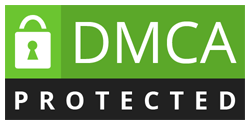Periodontal Cleaning Meaning, Procedure, Insurance, CPT Code | Periodontal cleaning vs Deep cleaning vs Regular cleaning
Content:
- What is Periodontal Cleaning?
- Periodontal Cleaning Meaning
- Periodontal Cleaning Procedure
- Periodontal Cleaning Insurance
- Periodontal Cleaning CPT Code
- Periodontal Cleaning vs Deep Cleaning
- Periodontal Cleaning vs Regular Cleaning
What is Periodontal Cleaning?
Periodontal cleaning, also known as deep cleaning or scaling and root planing (SRP), is a dental procedure used to treat gum disease (periodontitis). Unlike a regular dental cleaning, which removes plaque and tartar from the surface of the teeth and gumline, periodontal cleaning goes deeper to clean below the gumline and smooth the tooth roots to help prevent bacterial buildup.

Periodontal Cleaning Meaning
Periodontal cleaning, also known as deep cleaning or scaling and root planing (SRP), is a specialized dental procedure used to treat gum disease (periodontitis) by removing plaque, tartar, and bacteria from below the gumline.
Unlike a regular dental cleaning, which focuses on surface-level plaque removal, periodontal cleaning targets deep pockets between the teeth and gums to prevent infection and further gum damage. The procedure typically involves scaling, which removes hardened plaque and bacteria, and root planing, which smooths the tooth roots to promote gum reattachment and reduce future bacterial buildup. Periodontal cleaning is recommended for individuals with gingivitis, periodontitis, or deep gum pockets, helping to prevent tooth loss and improve overall oral health.
Periodontal Cleaning Procedure
A periodontal cleaning, also known as scaling and root planing (SRP) or deep cleaning, is a dental procedure used to treat gum disease (periodontitis) by removing plaque, tartar, and bacteria from beneath the gumline. It helps prevent further gum recession, infection, and tooth loss.
Steps of the Procedure:
- Examination & Diagnosis: The dentist or periodontist examines the gums, measures pocket depths, and may take X-rays to assess bone loss.
- Local Anesthesia (If Needed): Numbing may be applied to ensure comfort, especially if deep pockets or sensitive areas are present.
- Scaling (Plaque & Tartar Removal): Specialized dental instruments or an ultrasonic scaler are used to remove plaque, tartar, and bacteria from below the gumline and tooth surfaces.
- Root Planing (Smoothing Tooth Roots): The roots of the teeth are smoothed to help the gums reattach and reduce bacterial buildup in the future.
- Antibacterial Rinse or Medication (If Needed): In some cases, an antimicrobial rinse or antibiotic treatment may be applied to reduce infection and promote healing.
- Post-Treatment Care & Follow-Up: Patients may experience mild soreness or sensitivity. Good oral hygiene, regular check-ups, and possible maintenance cleanings (periodontal maintenance) are recommended to prevent recurrence.
Periodontal Cleaning Insurance
Most dental insurance plans provide coverage for periodontal cleaning (scaling and root planing, SRP), but the extent of coverage depends on the specific plan. Since periodontal cleaning is considered a therapeutic (not preventive) procedure, it is usually classified under "periodontal treatment" rather than a routine cleaning.
Insurance Coverage Considerations:
- Coverage Percentage – Many insurance plans cover 50% to 80% of periodontal treatment costs after meeting the deductible.
- Annual Maximums – Most plans have an annual benefit cap (e.g., $1,000–$2,000 per year), which may limit coverage.
- Number of Covered Treatments – Some plans cover one deep cleaning per quadrant (section of the mouth) every 24 months, while others allow more frequent treatments based on medical necessity.
- Pre-Authorization Requirement – Some insurers require a pre-treatment estimate or documentation, such as X-rays and periodontal charting, to approve coverage.
- In-Network vs. Out-of-Network – Seeing an in-network dentist usually results in lower out-of-pocket costs compared to an out-of-network provider.
Periodontal Cleaning CPT Code
The CPT code D4910 is designated for periodontal maintenance, a procedure involving deep cleaning to remove tartar and bacteria from below the gumline.
Periodontal Cleaning vs Deep Cleaning
Periodontal cleaning (D4910) is a maintenance procedure for patients with a history of gum disease, performed every 3–4 months to prevent recurrence by removing plaque and tartar. Deep cleaning (scaling and root planing, D4341/D4342) is a therapeutic treatment for active gum disease, involving deep plaque removal and root smoothing to promote healing. While deep cleaning is a one-time treatment, periodontal cleaning is ongoing maintenance for long-term gum health.
Periodontal Cleaning vs Regular Cleaning
A regular cleaning (D1110) is a preventive procedure for healthy gums, done every 6 months to remove plaque above the gumline. A periodontal cleaning (D4910) is for patients with gum disease, performed every 3–4 months to clean below the gumline and prevent recurrence. Regular cleaning maintains oral health, while periodontal cleaning manages gum disease.
Periodontal Cleaning Meaning, Procedure, Insurance, CPT Code | Periodontal cleaning vs Deep cleaning vs Regular cleaning
 Reviewed by Simon Albert
on
February 14, 2025
Rating:
Reviewed by Simon Albert
on
February 14, 2025
Rating:
 Reviewed by Simon Albert
on
February 14, 2025
Rating:
Reviewed by Simon Albert
on
February 14, 2025
Rating:











